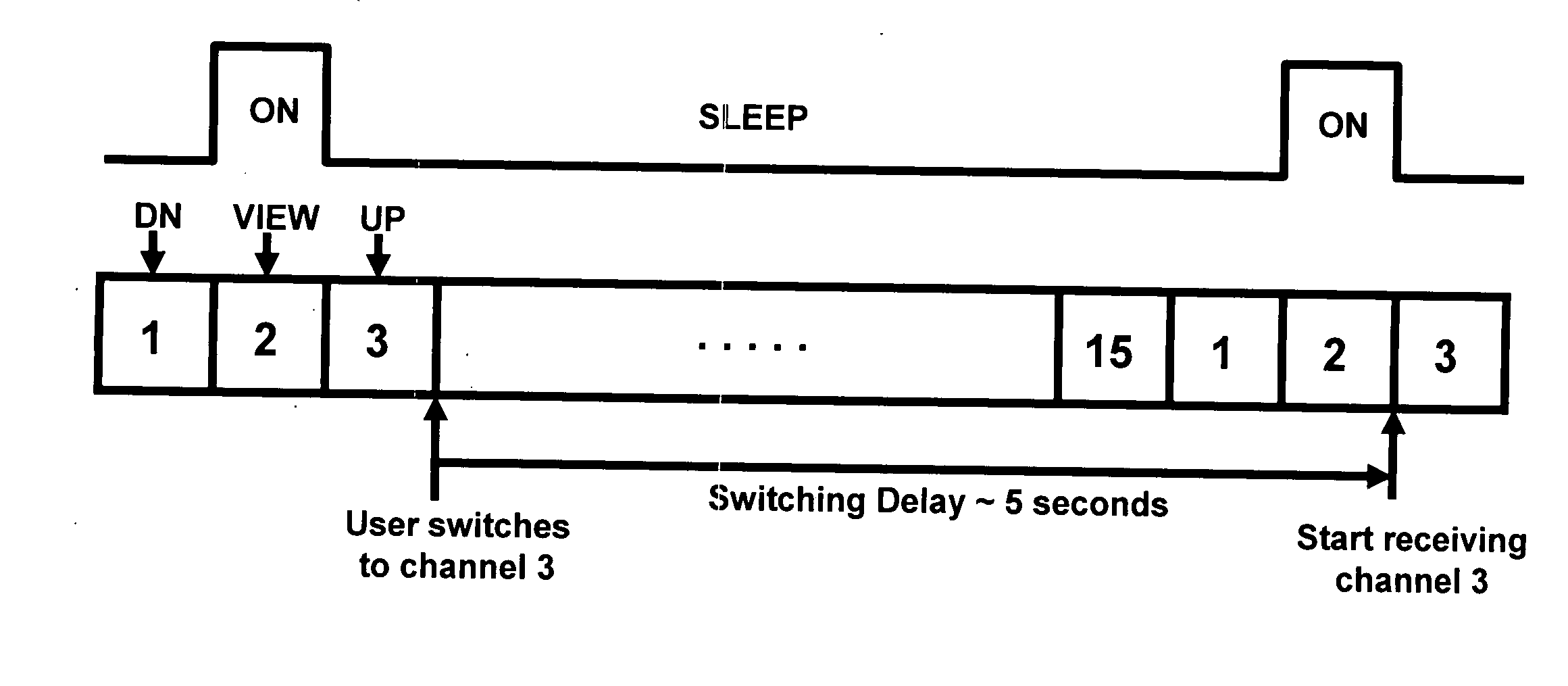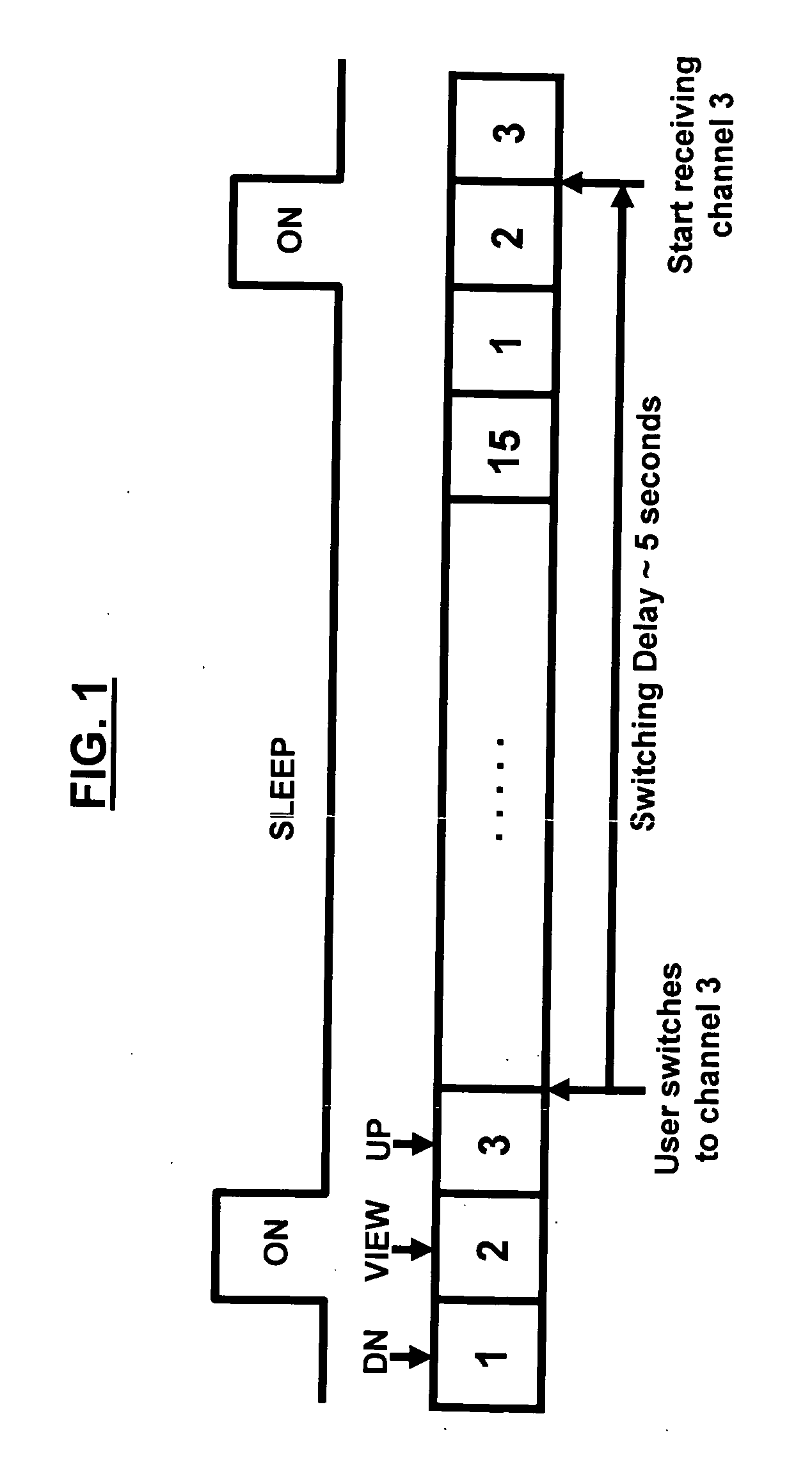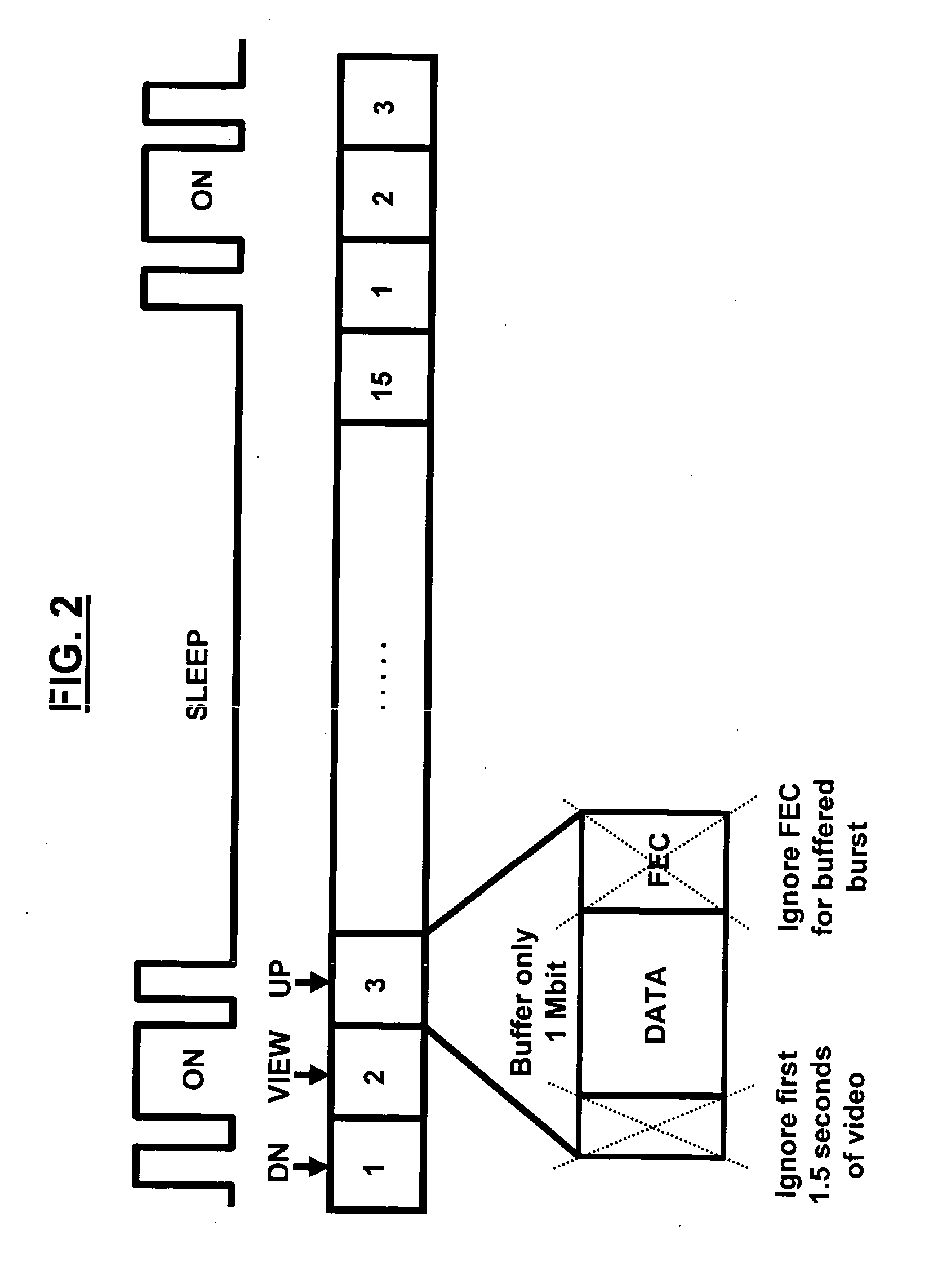Fast switching between time division multiplexed (TDM) channels
a time division multiplex and channel technology, applied in the field of television technology, can solve the problems of affecting the quality of the received signal, the size, power consumption, and most importantly the the poor performance of such devices, so as to reduce the delay of channel switching
- Summary
- Abstract
- Description
- Claims
- Application Information
AI Technical Summary
Benefits of technology
Problems solved by technology
Method used
Image
Examples
first embodiment
[0028] The embodiments of the invention provide techniques to further reduce the amount of memory needed for the buffering of favorite channels. In a first embodiment, the reduction of the buffer size can be accomplished by neglecting the redundancy in the bursts and / or first portion of the data. The receiver can save buffer size and / or power consumption by not buffering and / or receiving redundant data bursts. Redundancy (parity) bits are used for forward error correction (FEC) as described in U.S. patent application Ser. No. 11 / 251,721 and entitled, “Error Detection and Correction in Data Transmission Packets,” the complete disclosure of which, in its entirety, is herein incorporated by reference. In DVB-H systems, such redundancy bits are used to correct errors in the transmitted video, which might be caused by the channel. This redundancy typically accounts for one fourth of the burst (up to approximately 0.5 Mbit). The receiver could use the parity bits to correct errors in the ...
second embodiment
[0030] In a second embodiment, the receiver can save buffer size by sharing the memory that already exists in the receiver between the VIEW and UP channels. In DVB-H systems, decoding the VIEW channel generally requires 2 Mbit of memory (if more that one VIEW channel is being decoded, more memory is used in the receiver). The memory used for decoding the VIEW channel is usually required for a very short period of time (small fraction of a second). If the receiver empties this memory relatively quickly, it reuses it to buffer favorite channels that are received after the VIEW channel. In order to achieve this, the receiver implements a fast multiprotocol encapsulation forward error correction (MPE-FEC) decoder, such as that described in U.S. patent application Ser. No. 11 / 251,721, to reduce the time for the VIEW data to use the memory. Next, the receiver implements fast I / O circuits that are adapted to transfer the data to the video decoder buffer (which may be internal or external t...
third embodiment
[0032] A third embodiment provides for a smart channel allocation at the transmitter. As previously described, if the DN, VIEW, and UP channels are back-to-back in the channel line up, then the UP channel (which comes right after the VIEW channel) has the least channel switching delay as it can share memory with the VIEW channel for most of the time and thus does not need any extra buffer. However, the DN channel (which comes right before the VIEW channel) does not share the buffer with the VIEW channel and thus it suffers the worst channel switching delay if no extra buffer is added.
[0033] To equalize the channel switching delay between the UP and DN channels, they should be equally spaced from the VIEW channel as shown in FIG. 4. Here, the transmitter equally allocates spaced time slots from CH2 to CH1 and CH3. In this manner, the channel switching delay is uniform among the two most likely channels to switch to. If CHI and CH3 are equally spaced in time from CH2, they can share t...
PUM
 Login to View More
Login to View More Abstract
Description
Claims
Application Information
 Login to View More
Login to View More - R&D
- Intellectual Property
- Life Sciences
- Materials
- Tech Scout
- Unparalleled Data Quality
- Higher Quality Content
- 60% Fewer Hallucinations
Browse by: Latest US Patents, China's latest patents, Technical Efficacy Thesaurus, Application Domain, Technology Topic, Popular Technical Reports.
© 2025 PatSnap. All rights reserved.Legal|Privacy policy|Modern Slavery Act Transparency Statement|Sitemap|About US| Contact US: help@patsnap.com



